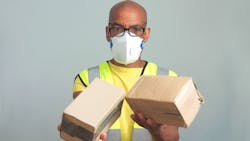If there is a bright spot in the COVID-19 pandemic, it is that more people recognize the importance of the trucking industry and how truly adaptable it is. As consumer and business buying practices changed, spurred on by stay-at-home orders along with drivers’ desire to be home more often, we saw that more heavy-duty trucking moved away from over the road toward dedicated, regional, predictable routes.
I am not saying that all trucking will move to regional haul overnight, but I think we will continue to see a gradual shift in market dynamics. We already are seeing dedicated business — which is code for regional haul — at some of the large carriers that we tend to think of as sleeper tractor operations growing. And when you look at their balance sheets, you can see that those dedicated routes might be more profitable.
When we launched Run on Less Regional in 2019, we did so because we wanted to learn more about this growing segment of the industry. COVID-19 shined a light on just how important regional haul is as it delivers to stores, homes, businesses and even medical facilities.
The trucking industry will play a vital role in seeing that the vaccine gets distributed as needed, and regional haul will be a big part of getting that to the doctors, hospitals and other medical facilities that will be administering the vaccine.
Especially now, it is important to our country's economic well-being to be able to count on the reliable movement of goods. Regional haul operations are part of the mix and from what we can tell a growing part.
But we need to be careful, especially as we move into the electric future, not to think that regional haul is a homogeneous market. From what we learned analyzing the data from Run on Less Regional (and detailed in our report on the event), there are a various operations that qualify as regional haul. That includes:
Shuttles — Short multiple runs of <150 miles round tripRegional haul was a growing part of trucking before COVID-19 as fleets attempted to respond to their drivers’ desires to be home on a more regular basis. Still, the pandemic with its increase in online ordering and consumer desire to get the goods they ordered the next day or even the same day, helped speed up the transition and more fleets shifted their operations to capitalize on this trend.
NACFE expects regional haul to continue to grow and become a larger percentage of the overall truck market. But just like any trend, it won’t happen overnight.
Michael Roeth has worked in the commercial vehicle industry for nearly 30 years, most recently as executive director of the North American Council for Freight Efficiency. He currently serves on the second National Academy of Sciences Committee on Technologies and Approaches for Reducing the Fuel Consumption of Medium and Heavy-Duty Vehicles and has held various positions in engineering, quality, sales and plant management with Navistar and Behr/Cummins.
About the Author

Michael Roeth
Executive Director
Michael Roeth is the executive director of the North American Council for Freight Efficiency. He serves on the second National Academy of Sciences Committee on Technologies and Approaches for Reducing the Fuel Consumption of Medium and Heavy-Duty Vehicles and has held various positions with Navistar and Behr/Cummins.
